Storied Stays: Uncover the Hidden Histories of these Top Hotels
October 8, 2024 by Hidden Doorways

Step into the pages of history with our curated selection of the world’s most storied hotels. From the neoclassical grandeur of Athens to the timeless elegance of Italy’s Lake Como, these extraordinary properties offer more than just a place to rest your head — they’re gateways to epochs past. Whether you’re dreaming of rubbing shoulders with royalty in London or tracing the footsteps of pioneers in the American West, join us on a journey through time as we explore ten hotels where luxury meets legacy, and every stay is an immersion in living history.
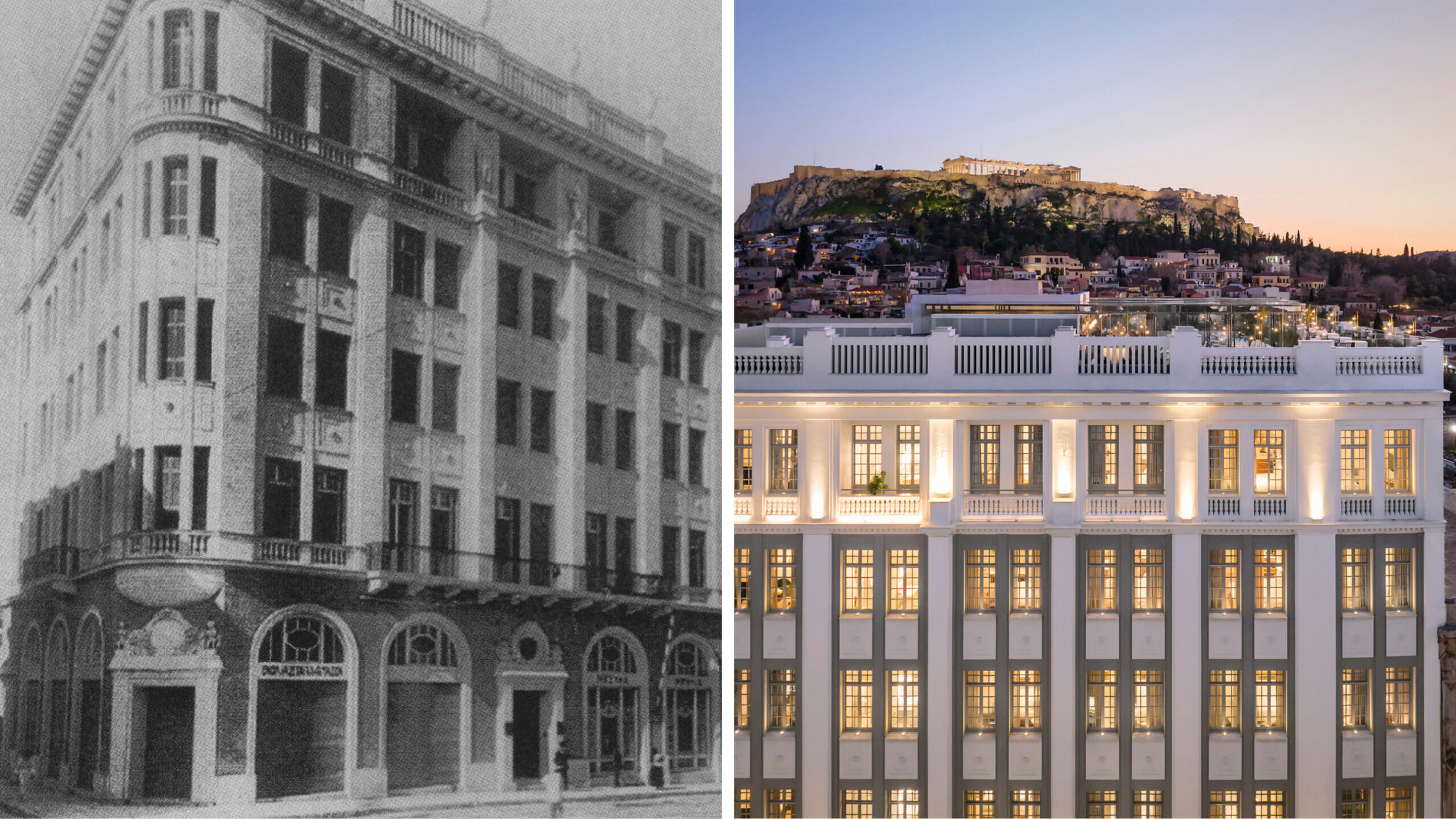
Be a Part of Athens’ Greatest Architecture at The Dolli
It doesn’t get much more historic than Greece’s capital city, Athens. Make the most of the city’s soul by staying at a hotel-maison in the very heart of its historical center with the mystical Acropolis just a view away. The Dolli is housed in a listed landmark building designed by Greek architect Andreas Kriezis and is a melange of energizing eclecticism and honored neoclassicism. White marble from ancient Greek quarries, as well as timber paneling and furniture made by local artisans, ground the place. Original artwork by Picasso and Cocteau line the walls, and the ceilings recreate the former decorative plasterwork of old. Guests can expect to be bowled over by Kriezis’ immaculate restoration of the inside and out, with tall arched windows topped off with striking moldings that will make jaws drop before eyes have locked onto the world-famous monuments beyond. Then head to the rooftop (as if any encouragement is needed) and watch how the Parthenon reflects in The Dolli’s infinity pool.

Step Back Into 19th-century Zurich at The Dolder Grand
While it underwent an impressive renovation in 2008, Zurich’s pinnacle of hospitality at The Dolder Grand still has a strong connection to its century-old past. Opening its doors in 1899, it was Swiss architect Jacques Gros who brought it into being using the classic Swiss timber construction celebrated at the time. The hotel gradually evolved with the ‘Rotonde’ semi-circular restaurant being resurrected in 1924, followed by one of its most notable milestones — the Dolder sports facilities, including its golf course, Kunsteisbahn (its open-air ice rink), and the wave pool in 1934, designed in a more modernist architectural style. Facilities flourished, but World War II pushed the hotel to its limits with only a dozen guests staying — including Count B, who rented a whole suite of rooms for himself, his son, governess, and a few hundred birds until the end of the war. Boom eras thankfully followed, and today the hotel celebrates 125 years of fine hospitality, marking the occasion with its Grand Heritage pop-up culinary experience that honors its past and present. Michelin-starred chef Heiko Nieder blends modern cuisine with the recipes of the great Auguste Escoffier – the legendary founder of Grande Cuisine.
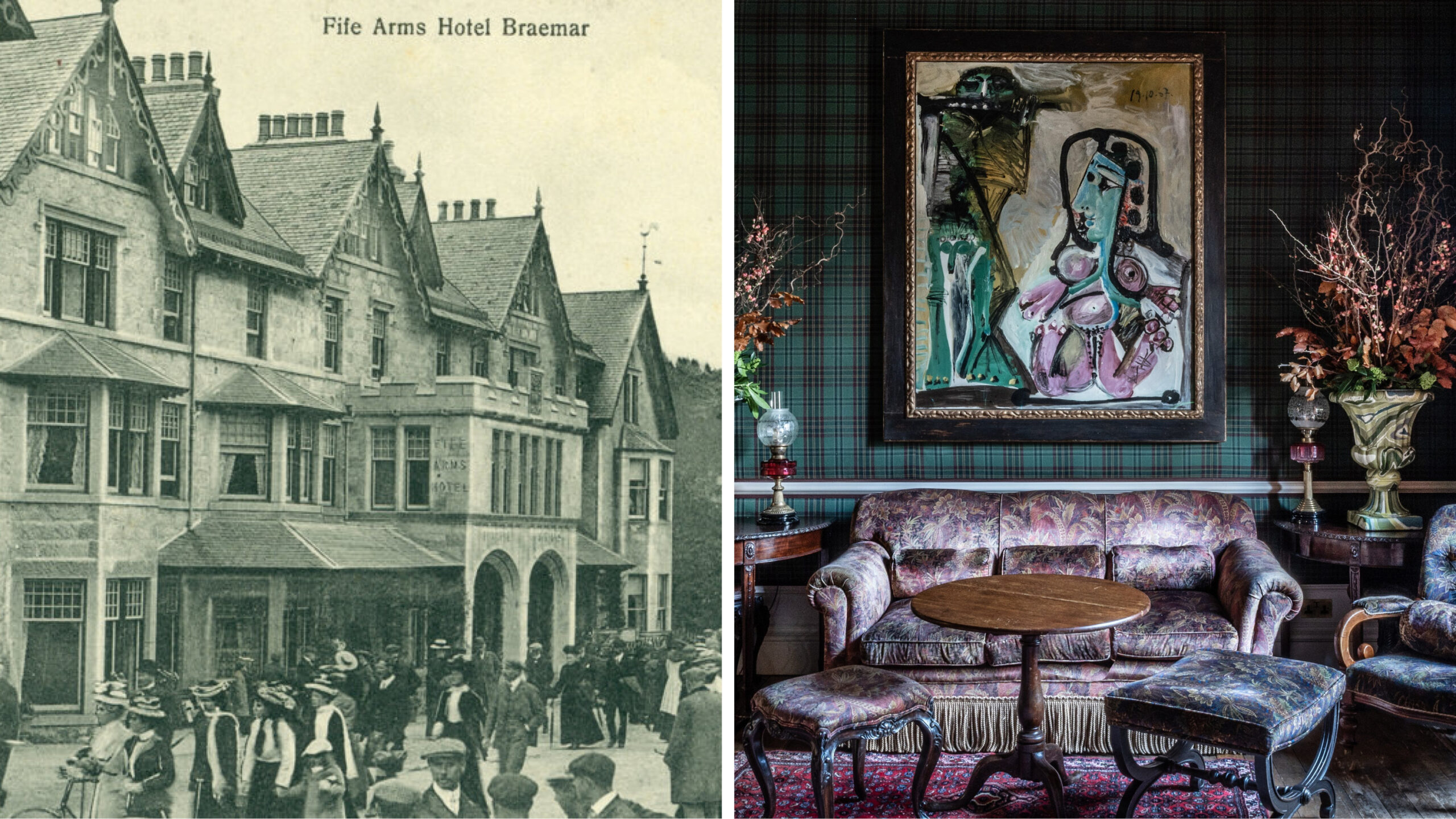
Land at a Braemar Landmark at The Fife Arms
Another 19th-century triumph, The Fife Arms speaks volumes about just how popular the Braemar region was at the time of its inception via its size and stature — remember that Queen Victoria purchased Balmoral just 15 minutes from the hotel doors, which remains a Royal residence to this day. A small village (with just 400 residents) but a mighty one, those visiting are standing on soil that has borne witness to many pivotal moments in Scottish history, which guests can explore via one of the hotel’s historical tours. Braemar Castle, as well as the ruins of Kindrochit Castle, are also worthy historic visits (dating back to 1628), and for literary buffs, request to visit the house where Robert Louis Stevenson wrote the famous Treasure Island.
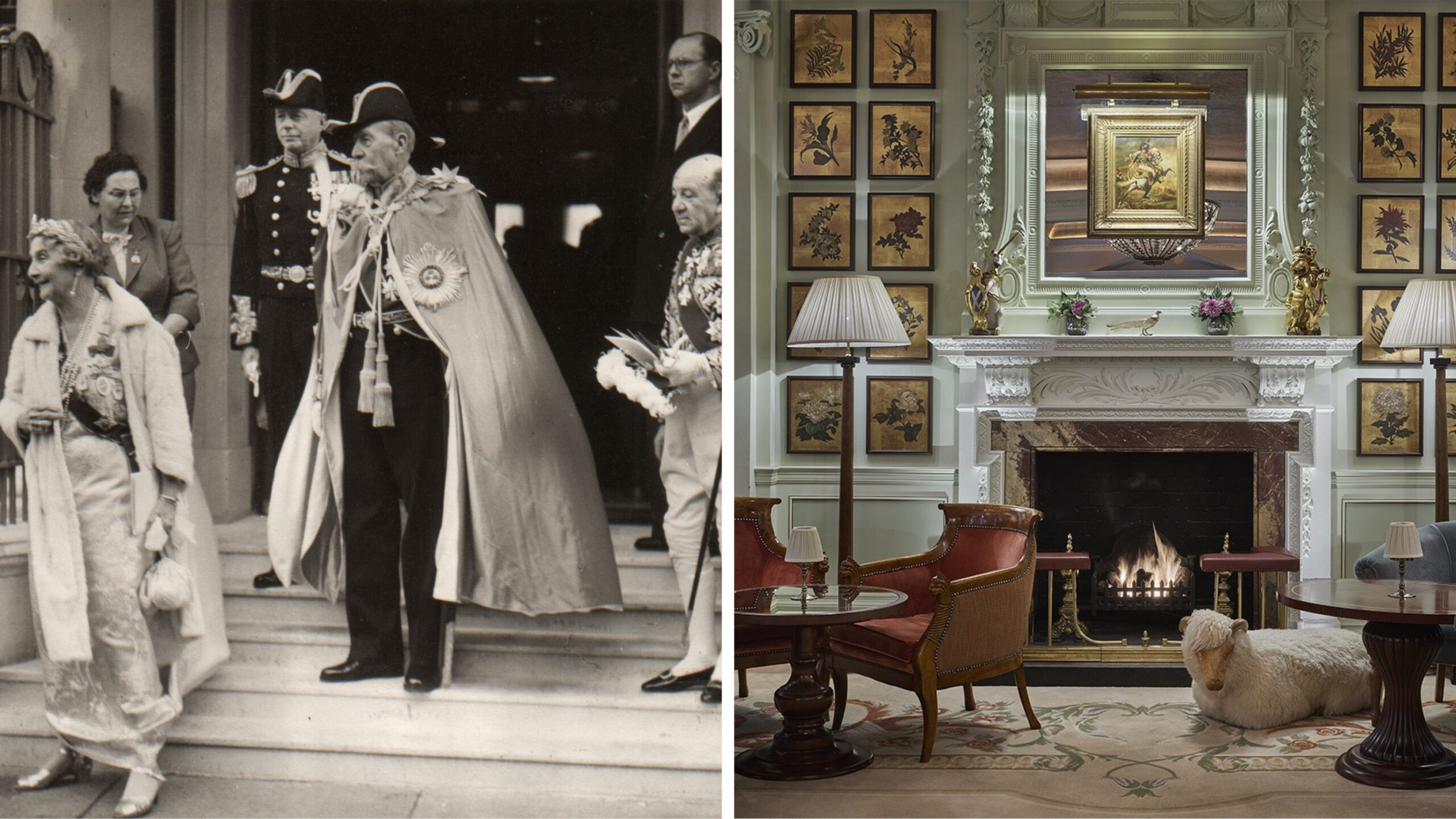
Rub Shoulders with Royalty at The Goring
‘One hotel, one family’ is how luxury London resort The Goring opens the story of its history. Built back in 1910 by Jeremy Goring’s great-grandfather Otto, he saw promise in a plot close to Buckingham Palace and set about removing cottages and a public house to give rise to the last grand hotel of the Edwardian era – The Goring. More than a century on, it’s seen world wars, hosted prime ministers and royalty, and was even where The Princess of Wales chose to stay the night before her wedding. The royal treatment? It’s part and parcel of a stay at The Goring – always has been, always will be. Considered London’s last family-owned luxury hotel, The Goring is also the only hotel to have been granted a Royal Warrant for its hospitality services for Households of Her Late Majesty Queen Elizabeth II.
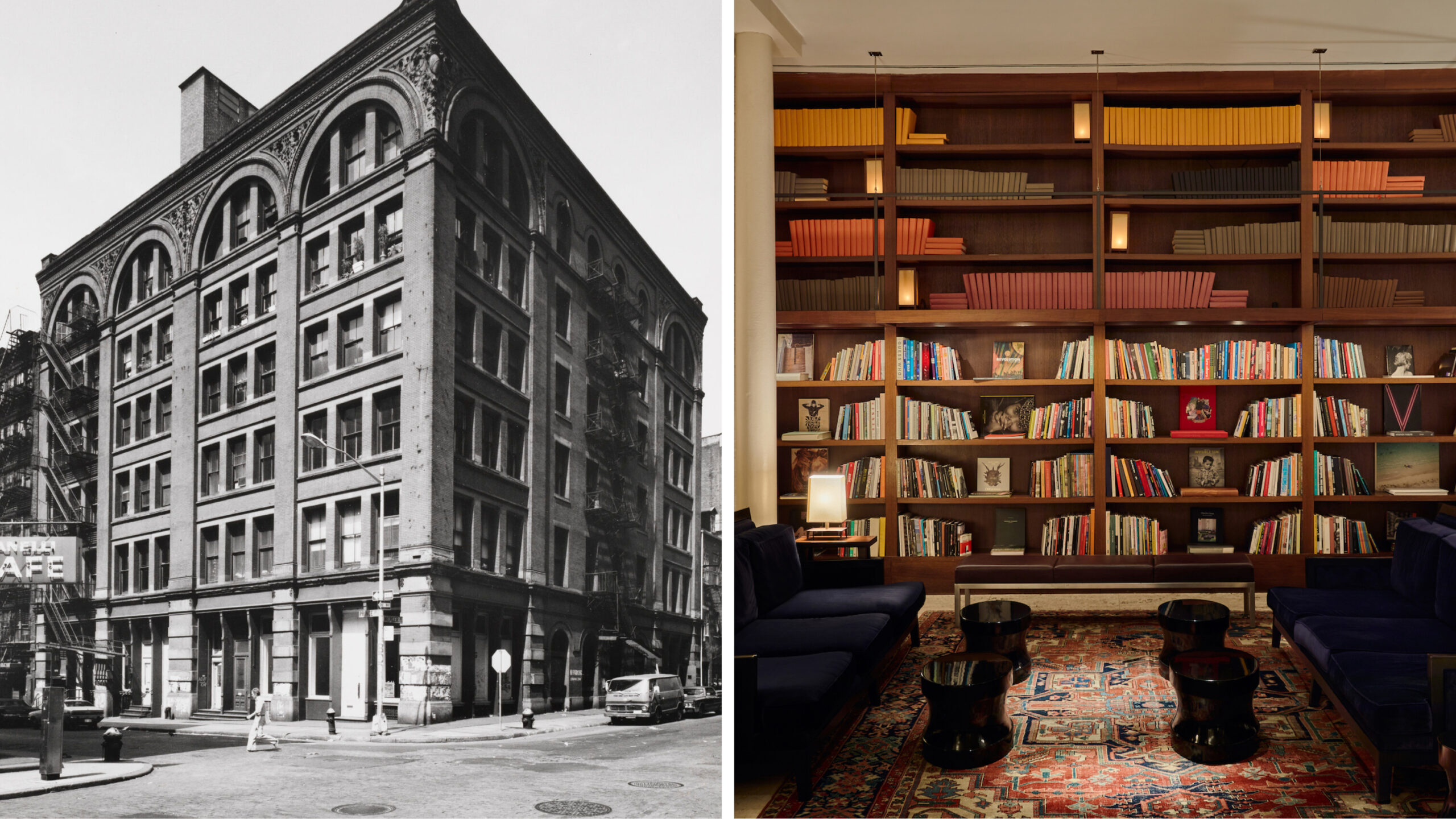
Witness New York City History Preserved at The Mercer
The Mercer is a six-story brick building that the New York City Landmarks Preservation Commission cites as an example of the Romanesque Revival period. Once a collection of artist lofts and studios, in 1890 it was converted for John Jacob Astor III and became the first hotel to offer an authentic taste of loft living. Designed to be completely original to New York, the commissioned Parisian designer Christian Liaigre ensured all furnishings would be exclusive to the hotel. Luxurious, stylish, with fine dining covered and then some, a stay at The Mercer is about appreciating state-of-the-art historical preservation — the New York Times’ words, not ours.
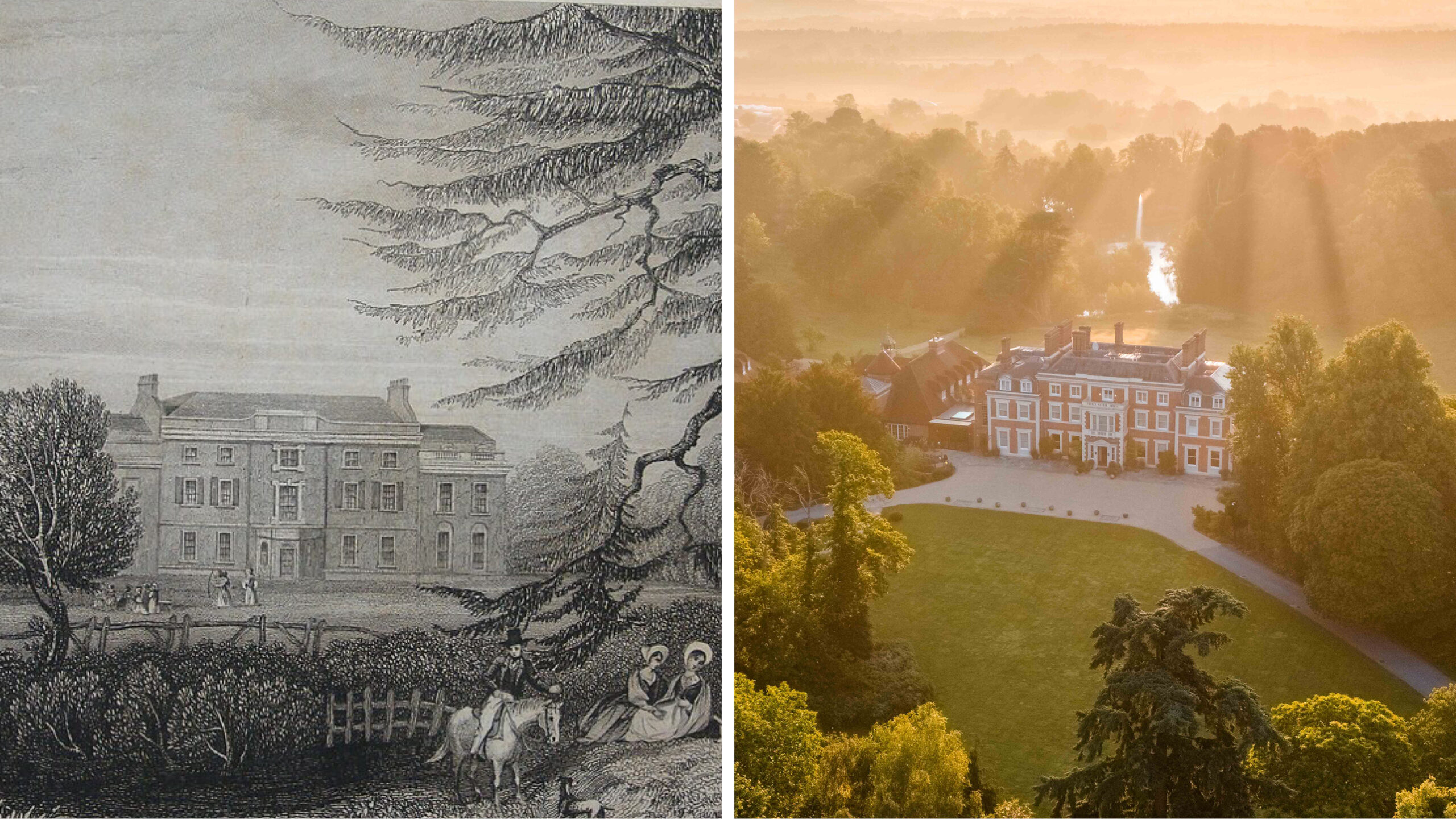
Walk in the Original Footsteps of Founder William Wildsmith at Heckfield Place
It may be a magnificent Grade II listed Georgian manor, but it was an 18th-century horticulturalist who first created today’s Heckfield Place. William Wildsmith didn’t own the house or the estate — that pleasure was held by various families over the centuries since it was first built in the 1760s — but he was brought in to transform Heckfield’s 220 acres of pleasure grounds and 180-acre Home Farm with a philosophy that remains unchanged today. The former owners had let much of the estate slip into a sorrier state, so when it was purchased by its current owners, they set about restoring it to its former glory with impeccable detail, skill, and honor. Wildsmith’s original 18th-century vision of wild lakes, rare trees, and a landscape that’s nurtured but encouraged to be a bit messy and real has been returned. The house itself was stripped back and restored as best as possible to recover its soul with the help of the finest British artisans. You can feel the past being honored here, but with a new energy that will have guests returning time after time.
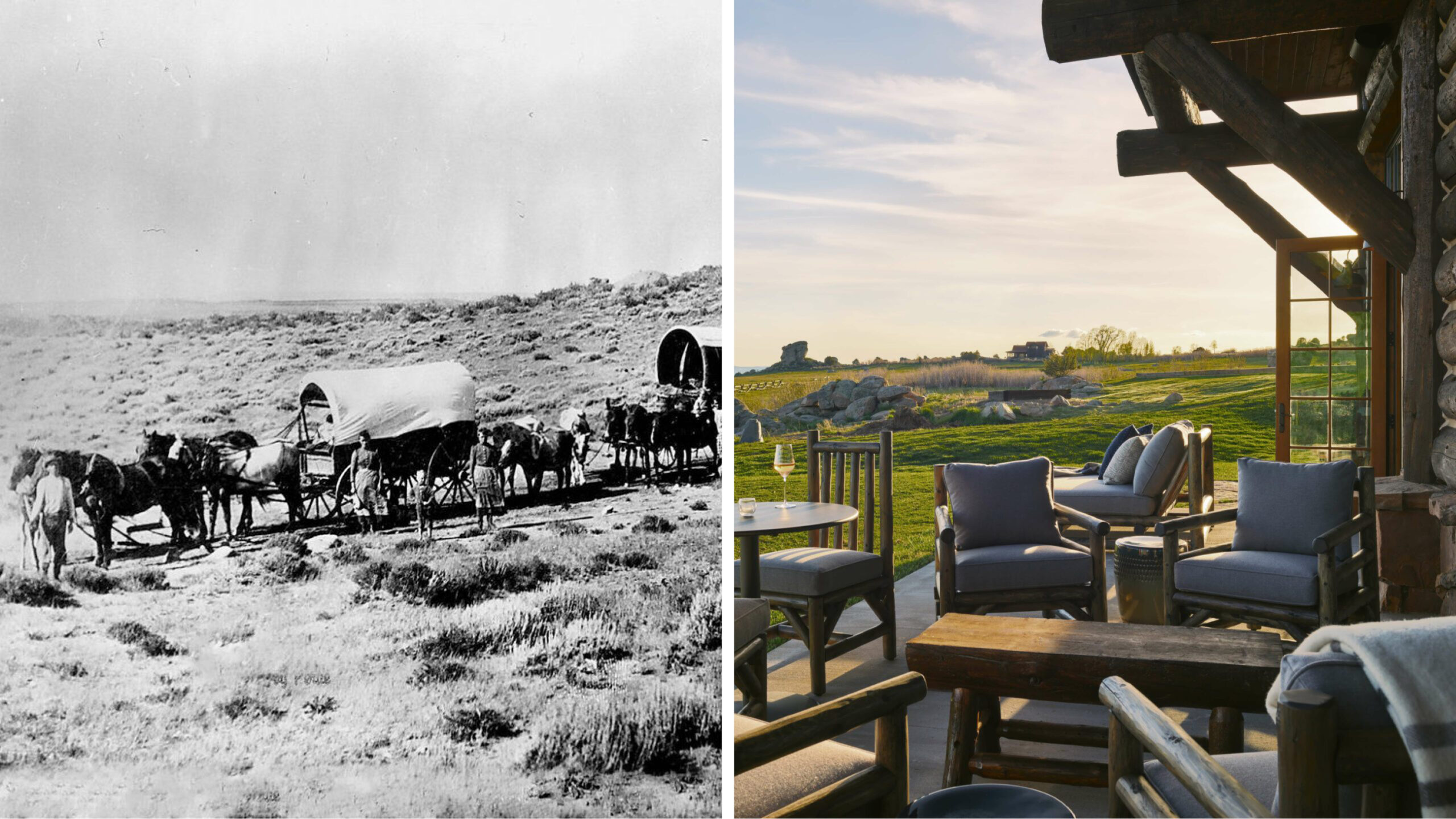
Honor The Pioneering Spirit at Brush Creek Ranch
The land that Brush Creek Ranch calls home was once trodden by pioneers in the late 1800s as they established homesteads — a legacy that this all-American resort continues with its collection of historic properties with working cattle ranches. For centuries, the Saratoga region was a hotbed for Native Americans who would travel for its hot springs. This was a region ripe with opportunity, as the Sterrett brothers saw, settling the land in 1884 that would one day become Brush Creek Ranch and building the original homestead with logs hauled from what is now part of the Medicine Bow National Forest. Fast forward a century or two, and today’s 30,000-acre getaway seeks to preserve that original western way of life. The White family, who acquired Brush Creek in 2008, have relentlessly restored historic buildings, cultivated grazing pastures, supported the natural ecosystem, and carved out a resort that carries on the traditions of ranching — the lifeblood of the land here in Saratoga.

Historical Grandeur at Grand Hotel Villa Serbelloni
Another resort that harks back to the 1800s, Italy’s Grand Hotel Villa Serbelloni has been an emblem of elegance and historic grandeur from the get-go. At first envisioned as a private residence for the Frizzoni family, who lived there until 1873, they laid out their grand architectural ambitions in the destination town of Bellagio, and construction began for four solid years. Their majestic villa was later passed on to a Swiss-German entrepreneur – Mr. Breitschmid – who led it into its hosting future, christening it Grand Hotel Bellagio, and attracted prestigious travelers from all over the world. Like many of our featured historic hotels, it entered a dramatic chapter during the war years and became a military hospital. When it came out the other side and Mr. Breitschmid no longer had it in him to return it to its former glory, he passed it on to Arturo Bucher but continued to reside in the hotel’s walls until his death at the remarkable age of 107. During World War II, it miraculously remained untouched and became a sanctuary to many – refuge for Jewish families and apartments for those seeking safety. So to stay at Grand Hotel Villa Serbelloni is to know this has long been much more than a hotel. Its walls look and indeed are luxurious, but listen closely, and they whisper resilience, home, history, and haven.
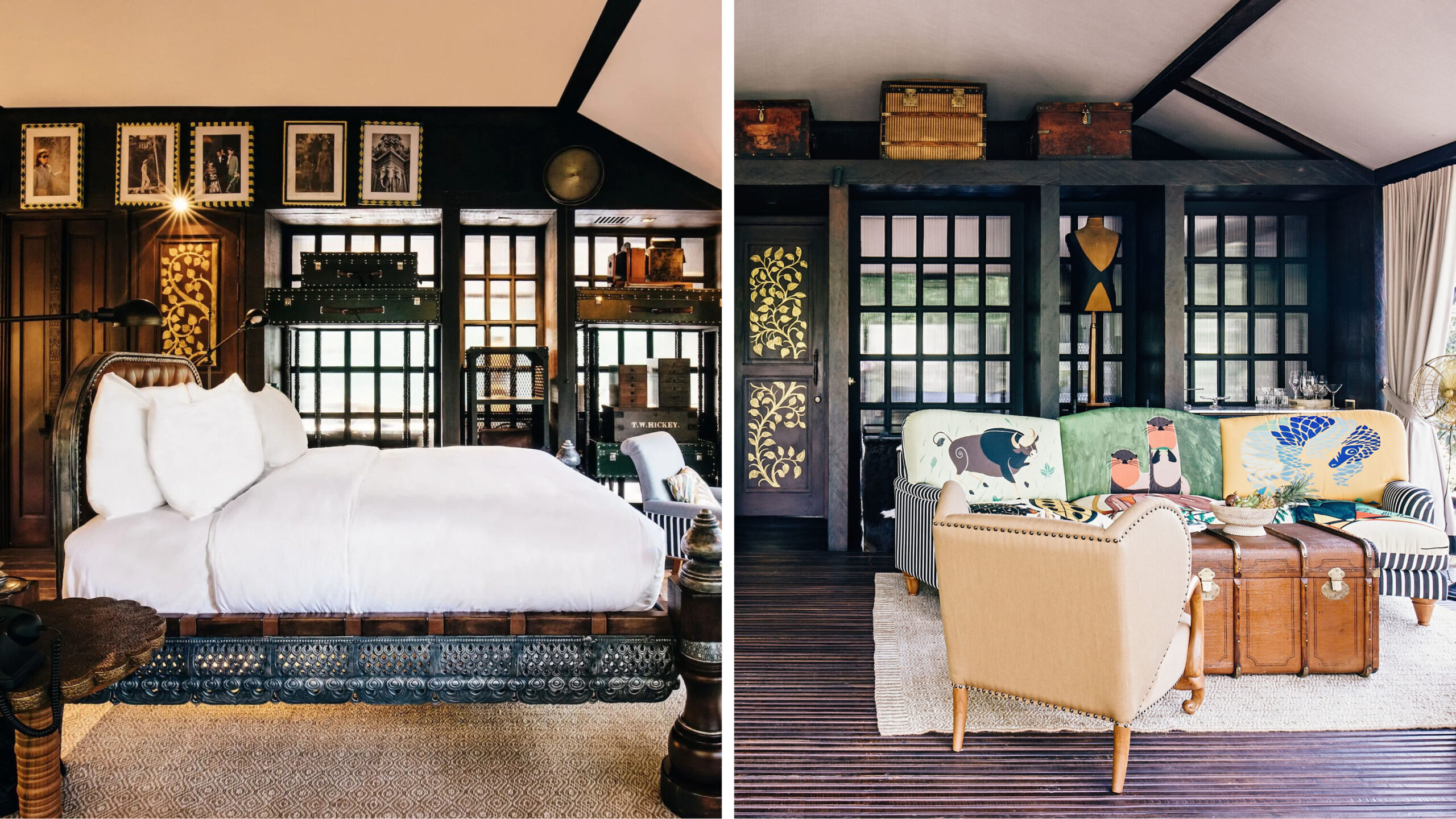
Live the Legends of Themed Tents at Shinta Mani Wild
Each and every tented accommodation at Bill Bensley’s Shinta Mani Wild has a story to tell. His beloved jungle retreat reflects his respect for the environment it stands in, so every tent has thoughtful insights into the aspect of nature to which it’s most closely tied. There’s the Waterfall Tents, such as his ultimate favorite, tent #1, known as the Cambodian Royalty Tent, dreamt up to imagine where fashionable First Lady Jackie Kennedy might have wished to stay when King Norodom Sihanouk invited her to tour Cambodia in 1967. And there’s the Wild Tents, such as tent #4, The Bohemian Tent, that celebrates the bohemian spirit of the 1960s with artworks by the most famous Bohemian of all, Picasso, alongside painted murals of threatened animals in the nearby Cardamom Forest. Whichever of the 15 storied tents travelers choose, and whichever tale their tent tells, they all unite under Bensley’s founding principle: to conserve this precious corridor of rainforest from poaching and logging so that it may long remain the biggest and last great forest in Southeast Asia.

Stay Where the Greats Stay at Majestic Hotel & Spa Barcelona
For travelers heading to Barcelona but desiring it at its most historic, a stay at Majestic Hotel & Spa Barcelona is a must. Originally opening in 1918, it served as a home to authors including Federico García Lorca, Antonio Machado, and León Felipe. It cared for war correspondents from across the globe during the Spanish Civil War in 1938, and in more recent history, it played a critical role in signing the “Majestic Pact” — marking the acceptance of Catalan nationalism to the rotation of power in the Spanish government. Royalty such as Queen Maria Cristina, artists including Joan Miró, singers like Josephine Baker, and the soprano Renata Tebaldi have all chosen here as their home away from home, so it’s no wonder the hotel is considered one of the most historic establishments on Barcelona’s Paseo de Gracia. Over the decades, it may have changed hands multiple times, but the truth is that Hotel Majestic has always stood strong in its connection to finery and splendor, and no doubt always will.
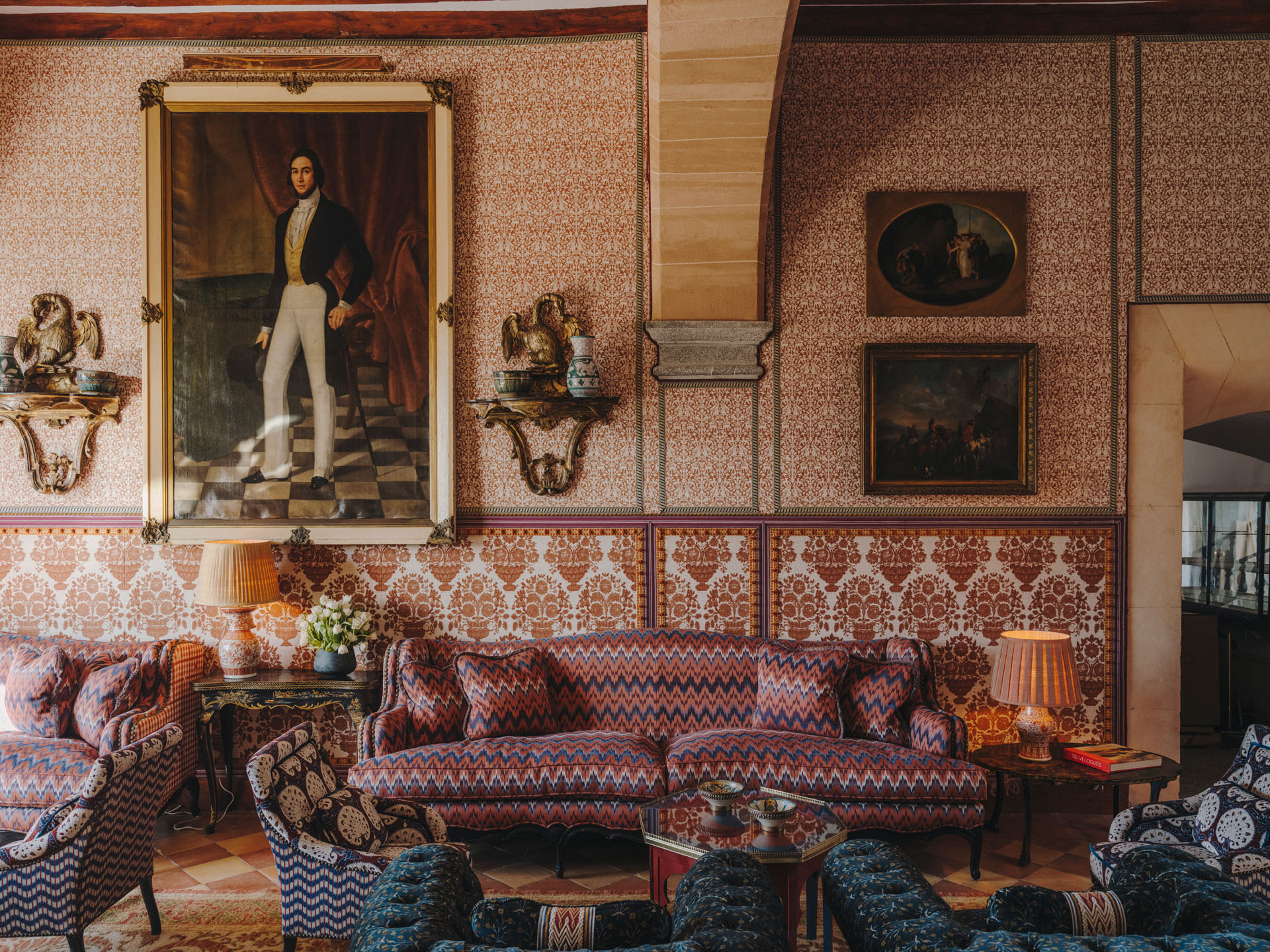
Son Net is A Pirate’s Treasure Transformed
Don Francisco de Net – a very lucky pirate indeed, for the Gran Hotel Son Net estate was rewarded by the king to this intrepid 17th-century soul who later became a Spanish Knight. Quite the story behind this restored five-star getaway hidden in the Mallorcan Sierra Tramuntana Mountains – a UNESCO World Heritage Site. Centuries later, it sadly became a ruin until it was happened upon by a Californian developer who was searching for a family escape in the Mediterranean. The family tended to it over a six-year renovation to restore its buildings, orchards, and olive groves. During this time, the son fell in love with a girl from Puigpunyent village below, whose family had once lived at Son Net too. They married, had children born at Son Net, and later decided to share their home, turning it into a grand hotel in 1998, yet never letting the comfort and ambiance of a grand family estate melt away.